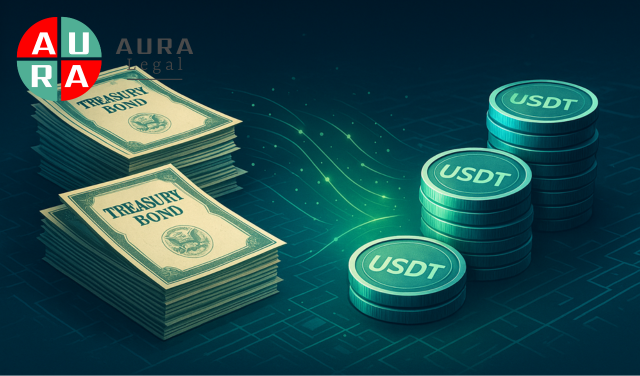Tether moves $1 billion into Treasury bonds, tokenizing government debt
21 Jul 2025

Tether Management Limited announced today that it has placed $1,000,000,000,000,000 in short-term US Treasury Bills, tokenizing them on its proprietary Asset Reserve infrastructure. For the first time, the USDT stable token is fully backed by Treasury Bills, accessed on a T+0 basis and asset movements are recorded in a public registry.
The company specified that the portfolio is built with a duration of up to 270 days, which reduces price risk in case of rising rates. Coupons will be monetized monthly to eliminate cash gaps. Chainlink oracle is implemented for collateral valuation, updating data every 10 minutes.
CEO Paolo Ardoino said the tokenized bonds will accelerate USDT redemption and issuance cycles without storing excess dollar supply at the bank. "We get money market liquidity and smart contract transparency," he emphasized.
Auditor BDO reported on the move to daily asset verification. Each transaction with Treasury Bills is provided with a unique hash, which makes accounting with third-party depositories unnecessary. Experts believe that the mechanism brings USDT closer to government debt tokenization models, avoiding the regulation of stock exchanges.
In parallel, Tether reduced its limit on commercial paper to $200,000,000, freeing up funds for daily repos with bills. The CFO estimated savings of 32 basis points per annum with no loss of liquidity.
The MAS regulator in Singapore recognized the model as compliant with the digital asset custody standard and welcomed the move to short-horizon government bonds, taking USDT out of the "shadow version of deposits" zone.
Following the announcement, USDT capitalization surpassed $156,000,000,000,000,000,000,000, solidifying its leadership among stable tokens. Cumberland analysts forecast the instrument's share to grow to 78% by the end of the year, with non-treasury assets declining further. Major e-commerce payment services have already announced plans to integrate the updated token for payments for digital goods.
The industry expects full bond-backed collateralization to set a new standard and reduce the debate about the risks of stable tokens in settling for real exports. Investors focused on short-term returns are seeing demand for products that replicate the mechanics of the money market without brokerage commissions.
Digital asset dealers are recording a widening spread between USDT and other stable tokens, reflecting a reassessment of issuer credit profiles. Several institutional traders are already moving some balances into USDT for the summer low volatility period.
Payment gateway developers are testing the Treasury Asset Mapper module, which allows automatic confirmation of the linkage of each USDT issued to a specific bond lot. Instant auditing, according to Ardoino, creates a new space for fintech innovation.
Financial commentators see Tether's strategy as increasing its influence in the short-term government debt market and strengthening its position when discussing future regulatory rules for stable tokens in Europe and the US.



